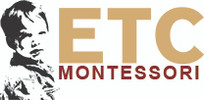
To disaggregate means to take a complete product, break it down to its components and sell each component separately. If you haven’t heard of it then perhaps it’s time you took a closer look at how it’s being used to sell the printed materials you purchase for your classroom.
In The Business Arena.
In the early days the notion of designing a product that included more in order to achieve more was widely accepted and credited with the early success of many businesses. In other words, the more features you have the more your product can do. The more it can do, the more customers, or market audience, can appeal to. The larger your market audience, the more you can sell. The more you can sell, the more money you can make. Nonetheless, the current thought in business schools around the globe is quite different. By modern economic ideologies the idea of an “all-encompassing product” is no longer an acceptable option. The idea of disaggregating is now the acceptable norm allowing for several advantages, of which the most important is the maximization of the company’s revenue. To further understand how disaggregation benefits a company it is important that we get a glimpse of the advantages it offers:
Disaggregation creates nimble product selection.
Traditionally, it takes far more time to develop a program with multiple smaller pieces. Disaggregation means easier manufacturing and the selling of those individual smaller units, at a deceptively cheaper price.
Disaggregation embraces essentialism.
The customer perceives the individual part of the product as the essential tool for the essential job. The right tool for the right job, right now. If the aim changes, then a different tool will be incorporated.
Disaggregation opens new markets for your products.
Because of its deceptively cheaper price, it allows for more people to buy into having “just that part.”
Disaggregation encourages the process of product evolution.
If a change needs to be made in the smaller product there is no need to adjust how everything else “fits together.” Therefore, you can isolate the item and further develop just that portion of the product.
The preparation of the environment is paramount to all else. The obligation of the teacher is to understand the wholeness and richness of the Montessori curriculum.
In The Educational Arena.
Many publishers of Montessori curriculum materials, who have entered the publishing market not from an educational background, but rather from a business background, are using the idea of disaggregation into their business plan of selling educational curricula. An example would be trying to break up the pink, or blue reading set and sell the cards separate from the booklets, or the reading lists separate from the puzzle words. This is a disaggregation of the full product and ultimately the process of presenting the concepts.
In this case the same goals described earlier, that benefit the manufacturing sector can wreak havoc on the educational product. A curriculum is supposed to be a full course of study. It is not a bit-by-bit study, where you add activities on an as needed basis. If this is true for the traditional educational market, then imagine how important this is when we are dealing with the Montessori market.
By its pure nature and structure the Montessori pedagogy is different from the traditional educational system. Therefore, it is expected and required that the educational materials we use in a Montessori classroom are not only designed differently, but are also used in a different manner than mainstream educational products. The design of Montessori materials requires that they meet further philosophical and psychological standards.
Correctly designed Montessori curriculum is differentiated by four major characteristics:
The Spiral Curriculum
The Montessori curriculum is a spiral curriculum with indirect aims. It builds on previously acquired knowledge and moves from indirect aims to direct aims.
The Full Continuum of Thought
In the Montessori classroom we work on developing analytical thinking skills, application, and higher-level thinking skills. Knowledge is layered and experiences are scaffolded. Ideas should be presented in their entirety, and not added on as modules. Information should be readily available so that children can instinctively move forward on their own. If we create an environment where the child owns their learning experience, then making sure that they have all the necessary materials readily available to them becomes the standard and not an option.
A Recognizable Format
The Montessori curriculum has a defined format or look. This format is to be adhered to and recognized. Therefore, a three-part card will always have a recognizable format. This “recognizable format” allows the child to identify the action that needs to be incorporated to proceed with an activity. It allows them to achieve individuality and independence in completing tasks.
Provides Experiences
Montessori curriculum is designed to provide experiences that allow the development of higher-level thinking skills instead of base knowledge and comprehension.
As Montessorians we need to be cautious of products that are pitched to us as parts of a bigger unit. Yes, they may appear cheaper, but overall when you consider that you have to purchase each “unit” separately to make up the entire curriculum, then cost is no longer a factor. Furthermore, by not having everything available to teach the full concept, you have broken up the continuum of thought. You have now disrupted the format of the presentation and in doing so you have allowed inconsistencies to creep in resulting in the disassociation of the program you are trying to incorporate. Whether it be reading, math, language, or science, the direct and indirect aims are crucial and should be presented in their entirety.
The preparation of the environment is paramount to all else. The obligation of the teacher is to understand the wholeness and richness of the Montessori curriculum. Purchasing disaggregated products not only disturbs the fluidity of the learning process, but also disturbs the aesthetics and harmony characterized by a model Montessori classroom.

